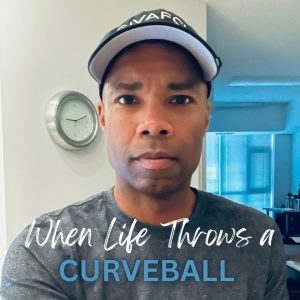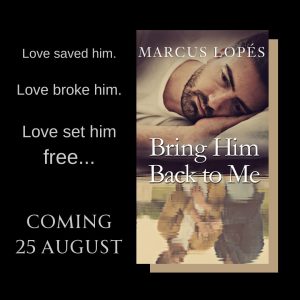
It happened overnight. That subtle shift from forty-nine to being half a century old. I didn’t make a big deal out of turning fifty. A few of us celebrated the occasion at Antler, a restaurant I’d been wanting to try for a while—and we weren’t disappointed. I had planned to kayak the morning of my birthday, but strong winds forced to me reschedule. The next day, though, I was out on the water and exploring the Humber River—all the while trying to dodge the curveball life was throwing at me.
Running Through the Pain
 I can admit now that as a kid I was a bit of a crybaby. If I did something embarrassing, I cried. If someone insulted me, I cried. Or even if I tripped and fell, I cried. As a young adult, especially after coming out and dealing with my depression, I hardened up quickly. No matter what came at me, I wouldn’t cry. If something made me ‘emotional,’ I’d push back the tears. No more showing weakness. My coping mechanism, if you could call it that, was—and for the most part still is—not to let anyone see me cry. To just soldier on. Without knowing it (or maybe I did), I had embraced the myth of masculinity.
I can admit now that as a kid I was a bit of a crybaby. If I did something embarrassing, I cried. If someone insulted me, I cried. Or even if I tripped and fell, I cried. As a young adult, especially after coming out and dealing with my depression, I hardened up quickly. No matter what came at me, I wouldn’t cry. If something made me ‘emotional,’ I’d push back the tears. No more showing weakness. My coping mechanism, if you could call it that, was—and for the most part still is—not to let anyone see me cry. To just soldier on. Without knowing it (or maybe I did), I had embraced the myth of masculinity.
That mindset to ‘just soldier on’ carried over into my running as I started to experience injuries. “Just run through the pain,” I told myself, as if that was a badge of honour. Wasn’t that what real men did? I had had no interest in sports as a kid, so part of me thought that I wouldn’t stick with running if I stopped to recover and heal properly. But as running became a lifestyle—and I began to get fit physically, mentally, and spiritually—the idea of missing a run terrified me. Would I gain back the weight I’d lost? Would I end up quitting running too if I had to stop for a while? Or would I slide into another depressive episode? I told myself I couldn’t afford that type of curveball in my life, so I stubbornly pushed myself to run through the pain.
Suffering in Silence
Wearing my mask of masculinity, I’d never let on that I was in pain. I had one golden rule: suffer in silence. Maybe that’s because I have a high tolerance to pain (not a good thing) that has often delayed me seeking timely medical attention. Despite the throbbing pain that emerges in my right foot around the 12-kilometre mark over the past few weeks, I stubbornly completed 17.74 and 15.81 kilometre runs on 5 and 6 August respectively. And when pain appeared in my chest the following afternoon, I opened Dr. Google, found information on strained chest muscles, and carried on. When the lower part of my arm went numb, I chalked it up to my repetitive moments from writing (which had happened before). And, still, I said nothing.
This was just another curveball that life was throwing at me, and I was determined to manage through it in silence, without complaining, unaided. And despite the pain, I still ran. I spent three hours kayaking. I carried on as if life was tickety-boo (denial).
When Life Throws a Curveball
When I woke up last Thursday (10 August), I felt better. After a chiropractic appointment the day before, the numbness in my arm had disappeared. But by mid-morning, the pain in my chest was back (it had subsided for a bit), and I felt off. I was just putting the finishing touches on the potato salad I was making for dinner that night when I started to think about my family’s health history. Should I go to the ER? Am I overreaching? Am I a hypochondriac?
Out of an abundance of caution, I made my way to the emergency room at Toronto Western Hospital. I spent the next four and a half hours undergoing various tests to make sure I wasn’t having a heart attack. Luckily, everything was okay. It turned out to be the worst—and prolonged—asthma flare-up I’d ever experienced, most likely triggered by my training for the marathon (I might have been overdoing it just a tad). What a curveball!
The Aftermath
Admittedly, the experience has left me a little shaken. After turning fifty, I wasn’t expecting to think so quickly about mortality. The last few days I’ve been kind of spinning, trying to figure out what to do next…what’s important. I have a few decisions to make, one specifically around the marathon. Because I’m also waiting to hear, after having an X-ray of my foot done on Friday, if the pain in my foot is the result of a stress fracture. If that’s the case, will I have enough time to heal and run the race? Am I kidding myself?
This isn’t the time to run through the pain, and as frustrated as it makes me, I’ve put a full stop on my running until the results of the X-ray are in. Yes, I want to run the marathon, but at what cost?
This isn’t the first curveball I’ve dealt with. But I’ve learned enough to know that now is the time to stop and recover, to not let worry and doubt overwhelm, and to figure out what habits and routines I need to continue, change, or eliminate…one day at a time.
Leave a Reply